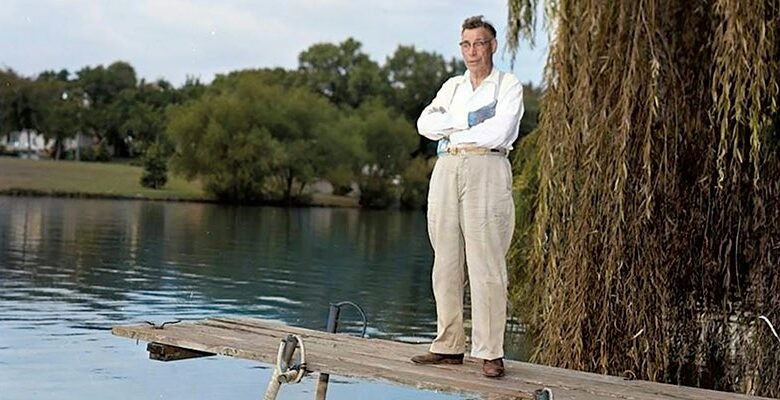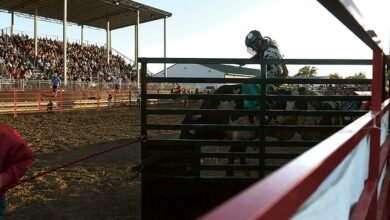
Lookback: The creation of East Side Lake
Published 4:24 pm Friday, August 8, 2025
1 of 3
In 1910, Jacob Herzog became inspired after reading an article that put a $1 million value on a city having a lake.
That night, Herzog discussed the idea of Austin getting a lake — worth nearly $33 million today — with a local barber who fished and swam in the former Beaver Lake on Austin’s east side.
“That seemed like a lot of money at the time,” Herzog told the Austin Daily Herald in 1961.
The old lake was created by a dam on Dobbins Creek that operated a flour mill near today’s East Side Lake dam until a June 1892 flood destroyed it.
The duo decided to push for rebuilding Dobbins’ dam but soon gave up after being met with opposition.
Five years later, Herzog — who lived near the former dam on Herzog Street (13th St NE) — pushed again while serving on the Austin City Council. He asked the city to buy the old dam’s property.
Despite opposition, the city bought the property, starting a nearly 25-year effort led by Herzog that eventually created East Side Lake after a rainstorm in 1938 finally filled the excavated lakebed. It was the first time in 47 years that Austin’s east side had a lake.
In 2021, a public area overlooking East Side’s dam was named “Herzog View” by the city in honor of the Austinite who championed the lake idea for several decades. That same year, Herzog, who died in 1970 at age 83, was honored as one of Austin’s “Pillars of the City.”
Herzog played a major role in how much of Austin looks today along waterways and parks – not just East Side Lake, where he also rescued a 15-year-old boy from drowning in 1947.
A Milwaukee Road train machinist in Austin for most of his career, Herzog entered politics in 1912 when he being elected as a city councilman.
A decade later, Herzog began 12 years on the Mower County Board, and he later served from 1949 to 1958 as a legislator in the Minnesota House.
In the 1930s-1940s, Herzog worked about 10 years in administering federal work programs but returned to the Milwaukee Railroad after World War II.
In 1961, the Herald wrote a feature on Herzog and East Side’s history, stating he was “more than any other man responsible” for the lake.
For years, Herzog thought the lake would never happen. The former Beaver Lake area was a muddy marsh viewed as an eyesore with a large hole where the mill dam once stood.
After convincing the city in 1915 to buy the former dam’s site, the project to create another dam and lake stalled until the early 1930s. By that time, Herzog was on the county board when the federal Civil Works Administration (CWA) approved building a dam on Dobbins, starting in August 1934.
CWA labor built the dam but the federal Works Progress Administration (WPA) — directed by Herzog, the WPA’s regional manpower director — did most of the work to create the lake bottom and shorelines.
Material removed for the lakebed was used to fill muddy or marshy areas along Dobbins Creek in Austin’s Driesner and Sutton parks. It also was used to create Bandshell Community Park near Skinners Hill.
“The operations gave the city three parks, usable land and a lake bottom,” the Herald wrote in 1961.
During the 1930s, some called the future lake “Herzog’s mud hole” as work progressed slowly. At one point, 140,000 cubic yards of dirt had been removed from the lakebed but the completed dam remained open for the creek’s normal flow due to an upstream landowner threatening legal action.
In 1938, another 60,000 cubic yards of dirt were removed from the lakebed under a negotiated deal led by Herzog with the state’s transportation department to build a new highway (Oakland Place NE) closer to the future lake. In turn, this would provide nearby material for the highway construction and appease the property owner.
This became Austin’s new, eastside entrance in August 1938. The Herald in 1961 referred to the entrance as “one of the most beautiful in the country.”
Yet, there wasn’t enough water for a lake by 1938, and skeptics kept hounding Herzog about his “mudhole.” The dam was fully closed but Dobbins wasn’t providing enough water.
On Nov. 5, 1938, heavy rain fell near Brownsdale (the upper part of Dobbins) that filled the lake overnight. Before that, experts believed it would take weeks or months to fill the lake.
This started East Side Lake as a destination for boating, fishing and – during its early years – swimming.
Austin’s Izaak Walton League chapter immediately stocked thousands of mature fish in East Side Lake and got the city council to forbid fishing there until 1941.
Source link







